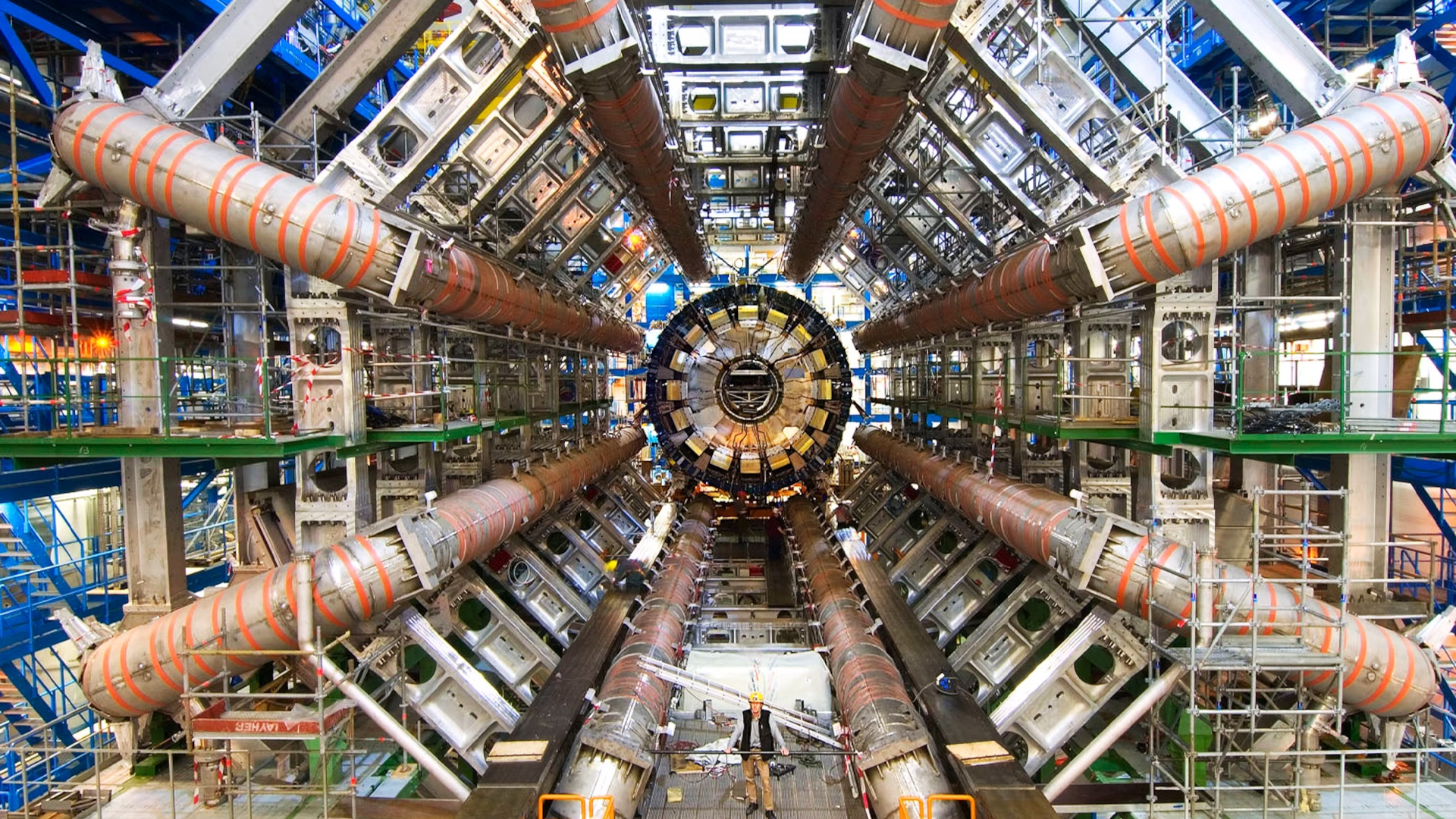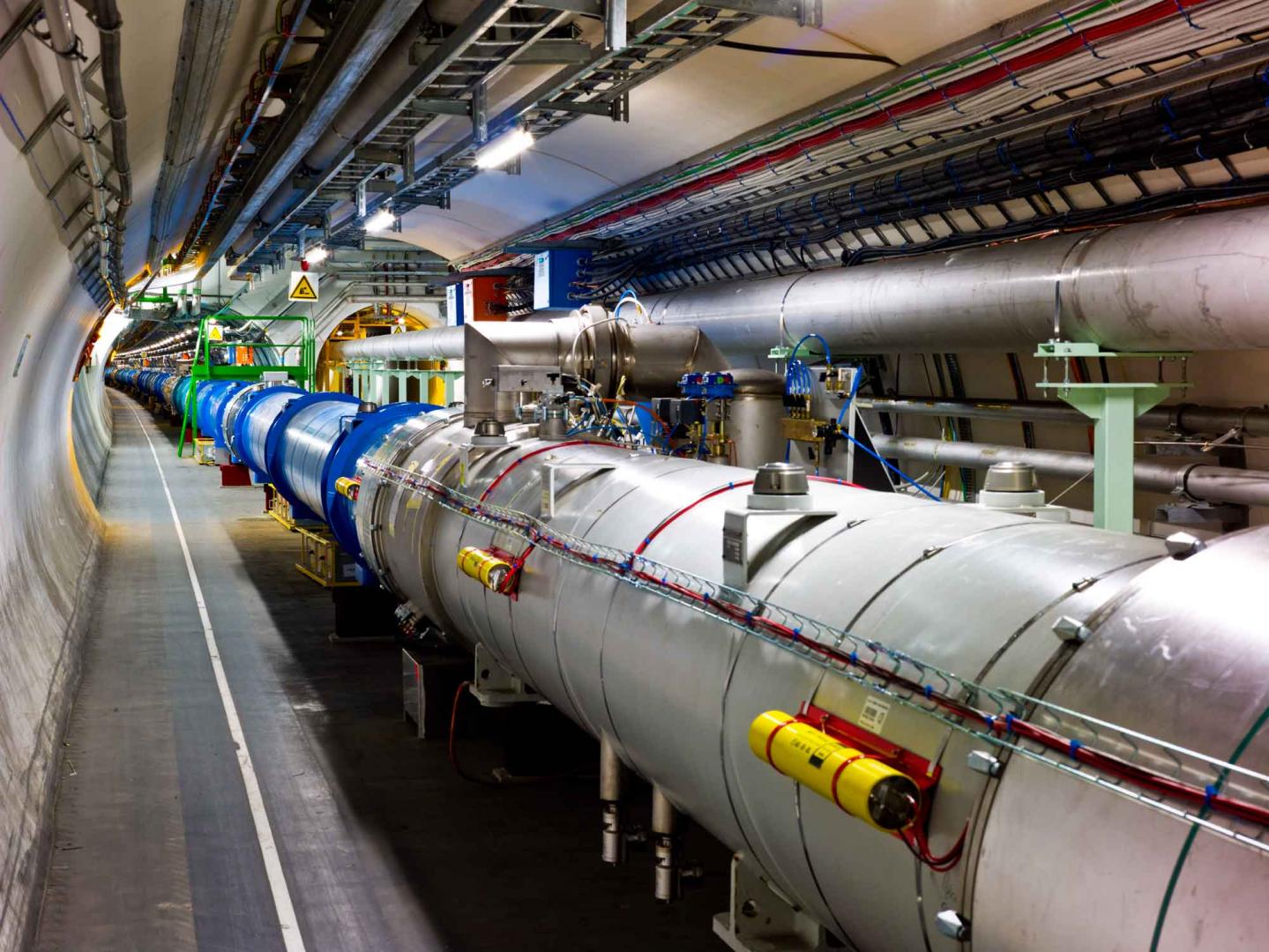CERN Powers Up the Large Hadron Collider

The 17-mile underground Large Hadron Collider tunnel at CERN lit with superconducting magnets.
What Happened?
The Large Hadron Collider (LHC) is the world’s biggest and most powerful particle accelerator, sitting 100 meters underground near Geneva. It uses thousands of magnets chilled colder than outer space to steer particle beams until they smash into one another.
Scientists hoped that by recreating the conditions just after the Big Bang, they could see the building blocks of matter—protons, electrons, quarks, and photons—in action. The machine produces up to 600 million collisions per second, like a cosmic replay button for the birth of the universe.
When the LHC first powered up, some feared it might create a black hole and swallow the Earth. Physicists, including Stephen Hawking, quickly reassured the public: even if tiny black holes formed, they would vanish instantly. What remained was awe at the scale of human curiosity.
The big target was the Higgs boson, a particle that explains why matter has mass. The theory was decades old, but no one had ever seen the particle. In 2012, after four years of experiments, CERN scientists finally announced evidence of the Higgs, confirming one of the last missing pieces of the Standard Model of physics.
The LHC is more than just one machine—it’s a global collaboration. Detectors like ATLAS and CMS bring together scientists from around the world, all trying to answer questions like: What is dark matter? Why is there more matter than antimatter? What are the hidden forces shaping our universe?
For all its complexity, the LHC boils down to this: humanity building a machine larger than cities, colder than space, and faster than imagination, all in the name of understanding where we come from and how the universe works.
Why It Matters
The LHC is proof of human curiosity on a planetary scale. By smashing particles together, scientists opened a window into the origins of the universe, confirmed the Higgs boson, and pushed the boundaries of what we know about matter, energy, and ourselves. It’s a reminder that even the biggest mysteries can be approached when nations, scientists, and imaginations collide.
?
Why did scientists build the Large Hadron Collider underground?
What is the Higgs boson, and why is it sometimes called the ‘God particle’?
How did scientists ease public fears about black holes and safety concerns?
What kinds of international collaborations make the LHC possible?
How does the LHC help us understand dark matter and dark energy?
Dig Deeper
A look at the engineering and purpose of the world’s largest particle accelerator.
An animated explanation of how colliding atomic nuclei helps scientists uncover the universe’s secrets.
Related

Push, Pull, Fall, Fly: Understanding Forces and Motion
From falling apples to orbiting moons, the universe runs on motion. Forces push, pull, and resist—shaping everything from your morning jog to the motion of planets.

Climate Science: How Our Planet Keeps Its Cool… and Why It’s Getting Hotter
Climate science helps us understand how the planet stays warm, why it's getting warmer, and what we can do about it.

Aerodynamics and the Forces of Flight
Weight, lift, thrust, and drag—these are the invisible forces every pilot and engineer must master to conquer the sky. From paper airplanes to rocket launches, aerodynamics is the science behind every flight.
Further Reading
Stay curious!
